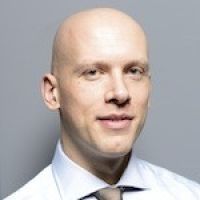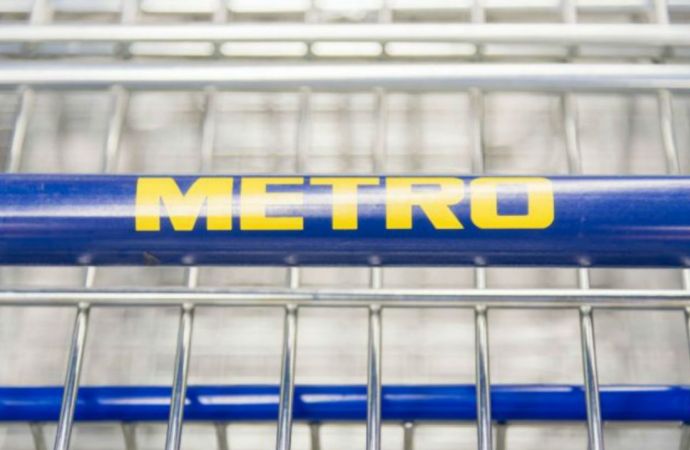ATMO conferences in Bangkok, Beijing, Tokyo and Sydney will showcase thriving and burgeoning markets for natural refrigerants in the Asia-Pacific (APAC) region. Jan Dusek, shecco’s APAC business development manager, outlines what to expect.
_1498814572.png)
Having long served as the most widely recognised platform for discussing natural refrigerants in Europe, North America, Japan and Australia, the ATMOsphere conference series is now coming to Southeast Asia and China for the first time.
Jan Dusek, managing director, shecco Japan and APAC business development manager, outlined the key developments that led to the decision to launch ATMOsphere in Bangkok and Beijing, and how they will shape the course of future ATMOsphere events in the region.
ATMOsphere conferences are recognised globally, so we want to use this platform to get global industry leaders together with local policymakers and end users to help them address their challenges with natural refrigerants.”
– Jan Dusek, shecco
ATMOsphere debuts in China and Southeast Asia
In the wake of several important developments in the APAC region in the past year – not least the Kigali Agreement to phase down HFCs, Dusek stressed that now is the right time for a conference in Southeast Asia.
“We’re hearing more and more about first projects with natural refrigerants in countries like Malaysia, Thailand, Indonesia, and Vietnam. Additionally, the first natural refrigerant subsidies are beginning in some of these countries, so now is the right time to have the conference and answer the question: how can we get more of this?” he said.
For its 4th edition, ATMOsphere Asia will be relocating to Bangkok, Thailand for the first time. The conference will be held on 6 September 2017 at the exquisite Sofitel Bangkok Sukhumvit hotel, the day before the Bangkok RHVAC trade show (7-9 September), which ranks among the world’s best HVAC&R exhibitions.
Dusek explained that the goal of bringing ATMOsphere to Southeast Asia is to build on ATMOsphere’s existing global brand recognition and leveraging it to help the region’s emerging market.
“ATMOsphere Asia in Bangkok is an opportunity to establish the base for discussion among local stakeholders and global industry experts – to share best practices but also to share what challenges end users face,” said Dusek.
The conference will feature representatives of leading global companies who will share their global perspective of the natural refrigerant market as well as introduce their local projects with natural refrigerants.
“We’re very excited to learn about new projects with CO2 transcritical in retail, commercial CO2 heat pumps, ammonia/CO2 systems in cold stores and food processing, as well as hydrocarbon plug-in systems,” said Dusek.
“The meeting in Bangkok will be an opportunity to learn much more about what is already happening on the ground,” he added.
In addition to ATMOsphere Asia in Bangkok, Dusek was excited to highlight what could potentially be an even larger opportunity for natural refrigerants in Asia.
On 12 April 2018, ATMOsphere China will be held in Beijing, the day after China Refrigeration 2018, the largest refrigeration technology exhibition in the Asia-Pacific region.
Dusek explained how ATMOsphere China had been in the pipeline for some time, but only now is momentum starting to build.
“We have been going to China for over ten years, working with the Chinese Ministry of Environment and meeting with countless Chinese stakeholders. We believe now is the right time,” said Dusek.
There have also been a number of key developments in China over the past year. Not the least of which was the Chinese Ministry of Environmental Protection and the Foreign Economic Cooperation Office’s endorsement of natural refrigerants in the majority of refrigeration and air-conditioning sectors.
“The list of recommended substitutes for R22 is a game changer that the global industry is yet to fully pay attention to,” Dusek said.
In addition to these important policy developments, Dusek revealed information on the latest market trends in the country.
“Leadership from the Chinese government has spurred further investments in natural refrigerant technology and it is only accelerating,” he said. “In the industrial sector, there are now more than 120 NH3/CO2 projects. In the retail sector, there are more than 30 CO2 subcritical projects and even signs of China’s first transcritical CO2 system to be completed this year.”
Dusek added that he was encouraged by the response he had heard.
“We’ve discussed the conference with our global partners and their feedback has been overwhelmingly positive. It really just signals the importance of this market and the immense potential going forward,” he said.
ATMOs continue to foster NatRef discussions in Japan, Australia
Japan and Australia are leaders in regional markets in terms of natural refrigerant adoption and ATMOsphere events will continue to foster uptake in these markets
“Along with bringing the ATMOsphere concept to developing regions such as China and Southeast Asia, it is important to continue the discussion in the more developed markets of Japan and Australia/NZ,” said Dusek.
Japan’s 6th ATMOsphere conference will be held on 13 February 2018 in Tokyo, one day before Japan’s largest retail exhibition, the Supermarket Tradeshow on 14-16 February 2018. Dusek also announced the move to an exciting new venue and explained important progress that has been made in the Japanese market over the past year.
Discussions regarding the continuation of the Japanese Ministry of Environment’s natural refrigerant subsidy scheme for commercial refrigeration and food manufacturing are coming to a head – with all signs pointing towards its reinstatement in 2018.
“This is great news, since the market in Japan is likely to be reinvigorated by the subsidy,” said Dusek. He argued that investments in natural refrigerant systems for industrial applications and cold stores along with hydrocarbons in the light commercial sector are also continuing to speed ahead.
“We’re seeing that CO2 transcritical is making inroads into the industrial sector this year. Additionally, we’re seeing the market opening up to hydrocarbons. It’s not so taboo anymore and this shift in attitude has been a long time coming – so we will see.”
Dusek stated that the release of new product line-ups from several companies, which are signalling growing demand for natural refrigerant solutions from end users.
“Awareness from end users in Japan about the economic and environmental impact of their investment decisions is increasing and companies are responding by expanding their natural refrigerant product line-ups,” said Dusek.
“Also, we’re seeing that competition with CO2 condensing units is heating up,” he explained.
Dusek spoke about an invigorated Australian market that he believes will see significant advancements in the coming years, led by some of Australia’s biggest companies.
Encouraged by these developments and the tremendous success of its first two editions, the 3rd Annual ATMOsphere Australia, taking place in Sydney on 7 May 2018, is expected to attract more attention than ever before. The conference will be held the day before the Air-conditioning, Refrigeration and Building Services (ARBS) exhibition on 8-10 May 2018, also in Sydney, which occurs every two years, and is the country’s pre-eminent HVAC&R event.
“In Australia, we’re most excited about leading retailer, Woolworths, commissioning their first transcritical CO2 system,” said Dusek.
“With other leading retailers like Coles, ALDI and IGA, we are looking at some 20-30 CO2 transcritical supermarkets running in Australia in 2018,” he added.
The transcritical system at Woolworths, Dusek explained, is unique in that it is designed to operate in 45°C ambient temperatures and its development has also led the way in up-skilling the industry’s technician and support ecosystem.
Dusek noted that this year had also seen increased collaboration between Australia’s leading HVAC&R industry associations and the federal government.
“HFC phase-down legislation has been passed this month, so it’s good to see the government taking the lead in giving industry the direction it needs to move forward,” said Dusek.
Australia is to begin phasing down HFC imports on 1 January 2018, which will lead to an 85% reduction by 2036. Additionally, industry-leading associations have continued their push for revised and updated standards for training and handling of natural refrigerants.
“We’re extremely excited about the upcoming conferences in the Asia-Pacific. ATMOsphere conferences are recognised globally, so we want to use them to bring global players together to inform policymakers and help everyone understand and address end user challenges,” Dusek concluded.
For more information on upcoming ATMOsphere conferences visit www.atmo.org or please contact:
Jan Dusek,
Managing Director, shecco Japan
Business Development Manager, APAC Region
or
Lydia Matthäus, Global Events Manager
Related stories






